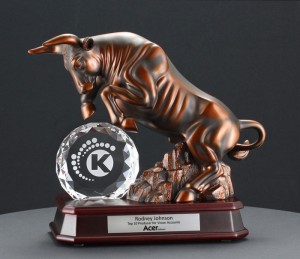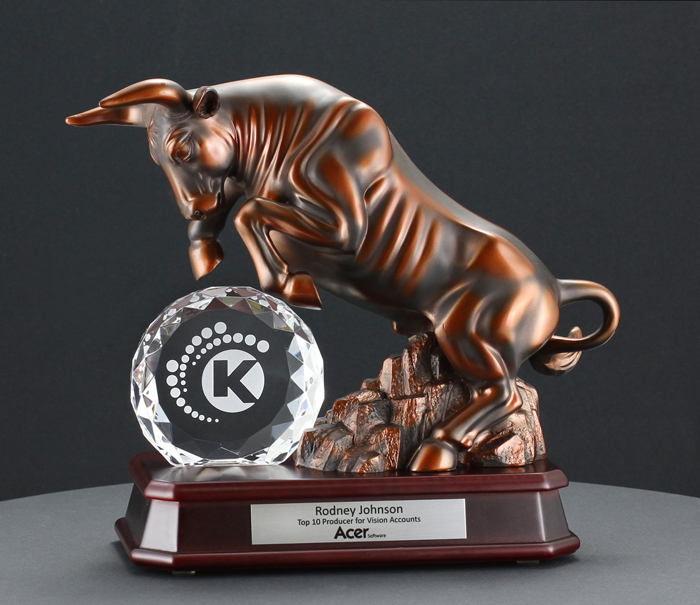Don’t know what to get your favorite financial professional for the holidays this year? A Bronze Bull and Bear Award Trophy is the perfect gift. Especially when the meaning behind it is understood. Here’s how the bull and bear markets got their name.

The terms “bear” and “bull” are used to describe the general actions or attitudes of either an individual (bear or bull) or the market. The term bull market is used to describe a market that appears to be in a long-term climb. When the economy is strong, the unemployment rate is low and inflation is under control we have the conditions for a bull market. When these three conditions are in effect, the emotional and psychological state of investors is positive and consumers are more likely to buy more stocks. When more buyers are interested in buying stock shares at a given price than there are sellers willing to part with their shares at the same price, you’ll see stock prices continue to rise. On the other hand, a bear market is one that appears to be in a long-term decline. When the economy enters a recession, unemployment is high and inflation is on the rise, we have the conditions for a bear market. When this happens, the emotional and psychological state of investors is negative with a decrease in demand for stocks. Fortunately, a sustained bear market is something consumers see from time to time. Historically, the stock market has risen more than it has declined.
Now that you know what the terms “bear” and “bull” mean, we can turn our attention to where these expressions originated. There’s some debate among historians but two sources are generally agreed upon. First, look to the way in which a bear and a bull attacks its opponents. A bull will thrust its horns up into the air but a bear will swipe down with its claws. Apply those actions metaphorically to the movement of the market and you’ll see why a bull market is one that trends upward while a bear market is one that trends downward. Second, look to the middlemen who sold bearskins three and four hundred years ago. Middlemen would sell bearskins they had yet to receive. They had to speculate on the future price of bearskins from trappers, hoping they would drop. More often than not, trappers would profit from a spread in the difference between the cost price and the selling price. But middlemen also became known as “bears, short for bearskin jobbers. This term stuck when it came to describing a downturn in the market. The term can be traced to an old 16th century proverb, “selling the bear’s skin before one has caught the bear” or the equivalent, “Don’t sell the bear’s skin before you’ve killed him,” the same thing as, “Don’t count your eggs before they’re hatched.”
The terms “bear” and “bull” were first used in 18th century England when investors in the stock world would sell something they didn’t yet own with the hope of turning a profit by buying the stock at a smaller price than they sold it before the delivery was due. This very transaction gave rise to the saying that such investors “sold the bearskin,” with some of these investors being referred to as “bearskin jobbers” as well. The Bronze Bull and Bear Award Trophy from ASAP Awards are mated with a modern mahogany finish solid wood design base. This bronze sculpture is meticulously hand finished, making it the perfect gift or award for your favorite financial investor or broker.
